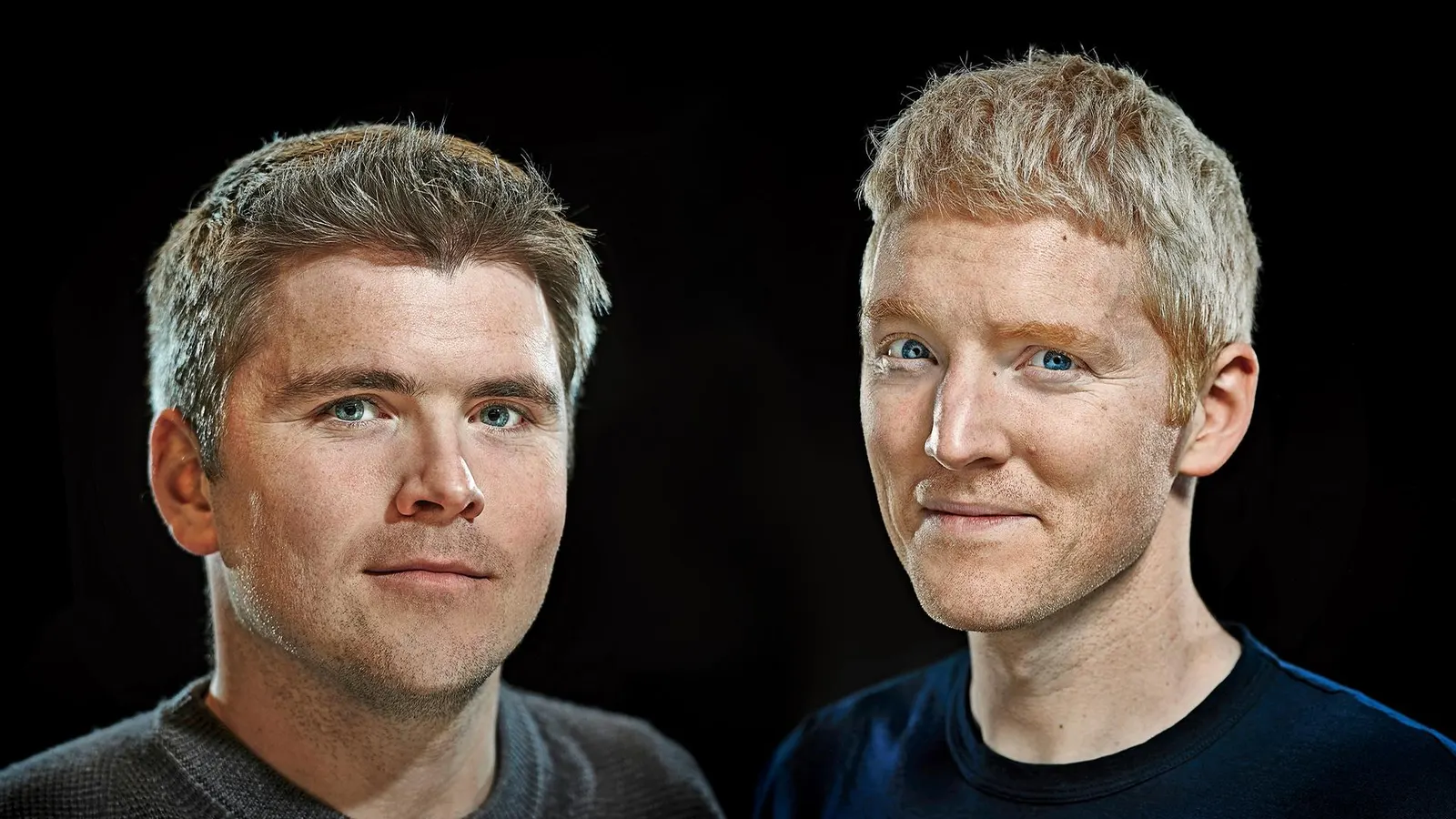
Your morning coffee purchase travels through 15 countries in 0.3 seconds. It’s not magic. It’s a global network of invisible digital pipes and two college dropouts saw their world-changing potential. Two brothers. Meet Patrick and John Collison: the architects of our digital future.
2010: the Collisons spot a problem:
- Online payments are a maze of code and frustration
- Global markets remain out of reach for small businesses
- The internet's financial plumbing is a leaky mess
Time to rewrite the rules of online e-commerce.
Their solution? Build new pipes. Invisible ones. Stripe is not only born. It emerges from the digital shadows. Silicon Valley scoffs. "Another payment processor? Cute." But the Collisons aren't after pocket change. Instead, they are rewiring the entire global economy and, by 2013, Stripe silently processes billions of dollars of transactions.
Next, the brothers spot a bigger trend. Tech giants aren't just coding. They're forging unseen connections. A hidden force signals a revolution beyond bits and bytes.
2018: The digital landscape transforms:
- AI chatbots pop up
- Cars navigate cities solo
- Homes become unexpectedly "smart".
Most see random innovations whereas the Collison brothers see a pattern. The same force propelling Stripe to billions.
2020: the pandemic crisis accelerates Collison's vision to focus upon:
- Remote work: The new normal.
- E-commerce: No longer optional.
- Telehealth: Doctors in your living room.
Behind the screens? The hidden force Collison predicted years ago. It's rewiring society at breakneck speed.
2022: Collison predicts his vision of tomorrow:
- AI will run empires while we sleep
- The next big app will be built by someone who can't code
- Understanding APIs will be as crucial as reading and writing
The tech world holds its breath as the digital revolution shifts into hyperdrive.
2024: Collison's predictions are unfolding before our eyes.
- AI trades $250B daily at JPMorgan without humans
- No-code apps reach $1 billion in yearly valuations
- Tech skills are a requirement in 90% of jobs
One invisible thread connects it all. A hidden language that's always been there. Behind every click, swipe, and tap lies a force. It built Stripe's billions, powers tech giants, and shapes our digital world. You use it daily without knowing. Its name? Three letters that will define your future: API.
API: Application Programming Interface. The invisible connectors of our digital world. It's the brain in your coffee app. The DJ in your music player. The assistant in your smart home. APIs turn digital complexity into seamless experiences.
The Collisons saw, years ago, that APIs aren't just for developers. They're the foundation of our digital reality. Understanding APIs isn't just for coders. It's the new superpower of the digital age. The future belongs to those who grasp this concept.
This blog update is based upon an update thread posted on X by Baptiste and I liked it so much that thought it was worth sharing here. There are videos embedded in Baptiste’s thread that are worth watching too, so click on https://x.com/BaptisteVicini/status/1826996163280785453 to see his whole original thread.
What gets me is that his conclusion is a little skewed to his interest, which is APIs. APIs are critical, but they are fifteen years ago and, as blogged regularly, it’s all about plug-and-play. Today is all about the other points raised: no-code and AI. In fact, rather, it’s about all three.
There is a prediction that, by 2030, a new company will create a billionaire who works on their own. A company with a single employee. A company that just produces innovation based on one person’s thinking through AI, no code and APIs. Is that person you?
Postscript #1:
Stripe is planning a new tender offer (at $𝟳𝟬 𝗯𝗶𝗹𝗹𝗶𝗼𝗻 valuation) to buy back shares held by employees, but unlike in previous employee tenders, it will finance this one entirely with its own cash 🤯
The latest employee buyback is part of a strategy by Stripe co-founders Patrick Collison and John Collison to allow employees to regularly cash out some of their shares as the company holds off on going public.
The potential size of the tender offer couldn’t be learned, but it is likely to be much smaller than Stripe’s last tender offer, worth nearly $700 million, earlier this year.
The company had about $615 million in free cash flow in the quarter that ended in June, two people with direct knowledge of its financial performance said to The Information
More info: https://lnkd.in/d-2erKrs
Postscript #2:
Amazon Web Services (AWS) has announced the launch of AWS App Studio, a new tool that promises to revolutionize enterprise software development with a handy AI boost. With AWS App Studio, enterprise users will be able to generate entire applications with simple written prompts.
And for more about Stripe, click here: https://thefinanser.com/search/1?s=stripe
Chris M Skinner
Chris Skinner is best known as an independent commentator on the financial markets through his blog, TheFinanser.com, as author of the bestselling book Digital Bank, and Chair of the European networking forum the Financial Services Club. He has been voted one of the most influential people in banking by The Financial Brand (as well as one of the best blogs), a FinTech Titan (Next Bank), one of the Fintech Leaders you need to follow (City AM, Deluxe and Jax Finance), as well as one of the Top 40 most influential people in financial technology by the Wall Street Journal's Financial News. To learn more click here...

